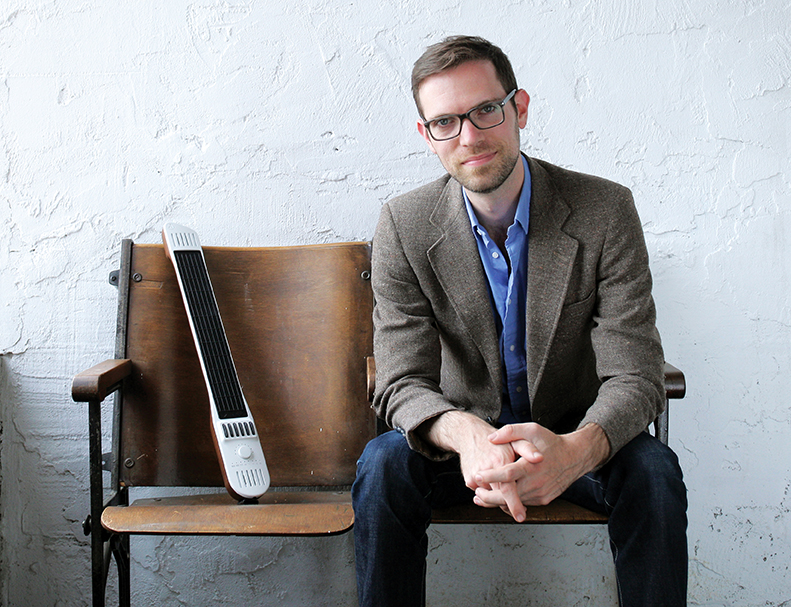One-Man Band
December 15, 2016

Mike Butera was always the guy in the band schlepping multiple instruments: the beat-up banjoes, the ukulele rescued from a dusty shop, the cello that overwhelmed the stage.
The classically trained violinist, who played in an Americana-roots band, couldn’t help himself. He was always tinkering with musical instruments—those he knew how to play and those he’d never learned.
Then, one evening, he and a friend felt inspired to play music, but all they had with them were apps on their cell phones. As he tapped the glass of his phone, Butera began to muse on an idea. Soon the guy notorious for schlepping too many instruments around had figured out how to shrink them into one.
In 2011, Butera founded Artiphon, a music technology company in Nashville whose first creation, the INSTRUMENT 1, allows players to strum a guitar, bow a violin, tap a piano, and loop a beat—all on a two-pound, molded-plastic device resembling a wide guitar neck.
“We wanted to build a new category of musical instrument, to change the way we think about who plays music and how,” Butera says. “Now, with a single instrument, you can be the entire band.” After launching their product on Kickstarter, Butera and his collaborators raised more than $1.3 million in the most successful musical-instrument campaign in the crowdsourcing platform’s history. Time magazine named the device one of the best inventions of 2015.
Butera likens his brainchild to the classic optical illusion of a duck whose bill, in profile, may actually be the ears of a rabbit. “With the touch of a button you can switch between radically different instruments,” he says. “The device can be the duck or the rabbit depending on how you view it—as a keyboard, for example, or as a string surface.”
The instrument connects to a range of mobile devices to enable users to access music apps such as GarageBand. “Through a software interface,” Butera says, “you can make any sound in the world, whether it’s from a sitar, a gamelan, or a 1957 Fender bass.”
Users can also customize the way they generate those sounds. “Most musical instruments are played in a singular way,” Butera says. “You learn to play the piano or the violin, but you can’t play a piano like a violin. The INSTRUMENT 1 allows you to mix and match playing styles. If you’re a guitarist, you can strum a piano. If you know the violin, you can bow a synthesizer.”
Butera, who holds a master’s in philosophy and a doctorate in sound studies, both from Virginia Tech, credits his doctoral program with giving him the theoretical foundation and creative flexibility to conceive Artiphon. He was the first graduate of the Alliance for Social, Political, Ethical, and Cultural Thought, better known as ASPECT.
Butera’s ultimate mission is to make playing music accessible and irresistible to all. “We’re aiming for a musical experience focused on exploration and creativity rather than skill,” he says. “We believe technology should be the invisible collaborator that encourages dabbling. We want to inspire people to explore music-making in their everyday lives.”
Written by Paula Byron


